Posted by Elena del Valle on May 23, 2018
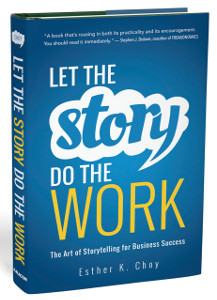
Let the Story Do the Work
Photos: Leadership Story Lab
After dedicating 20 years to evaluating the potential of future leaders to succeed for a living, as a university admissions officer, Esther Choy, M.B.A., decided to change career tracks. Now she is president of Leadership Story Lab. Taking advantage of the lessons learned in both jobs about the value of stories in the business environment she wrote a 230-page hardcover book for business leaders with technical, quantitative and analytical expertise who need to master communication so that they can inform and influence a broad set of audiences. Last year, Let the Story Do the Work The Art of Storytelling for Business Success (American Management Association, $24.95) was published.
“I’ve seen it from both sides,” Choy said by email when asked what makes her an expert on the subject. “Spent my twenty-year career on developing and evaluating leaders’ potential to succeed. The key is storytelling, which leads to job promotion, new clients and record fundraising.”
In the jacket of the book she promises readers it will help them by breaking down the art of storytelling into step-by-step guidelines, insights, and examples so they can weave storytelling techniques into their communications and strengthen their impact. The book, which has several pages of end notes, is divided into eleven chapters and three main parts: Anatomy of a Story, Bringing Stories to Life, and Stories in Action.
When asked if there are business types for which letting the story do the work is not advisable or doesn’t work she replied, “No. I wrote the book with a general business audience in mind. However, one thing to note is that Let the Story Do the Work is not meant to be a book on writing. Contrary to popular belief, oral storytelling shares more things in common with performing arts and it does with writing.”

Esther Choy, author, Let the Story Do the Work
The author believes in the power of well told personal stories combined with social influence to elevate a narrator’s ability to stimulate effective networking and inspire conversations as well as audiences during presentations. Asked about data accumulation by third parties, that some people may be shy about sharing more private information, and what other options they have she replied, “It’s precisely because third parties data collection is constant and inevitable that we have to take active control of our own narrative. Keep in mind, your compelling story shouldn’t just have your credentials or competence, which are both easy to search in this day and age. It should first and foremost share your characters. What make you you is the core of personal storytelling.”
When asked about the impact of technology, including AI, on the work environment and whether story telling may be affected she said, “Technology can connect us in ways never imaginable. If misused, however, technology create more harm than good. Just think the term, ‘Death by PowerPoint.’ The key to using tech without abusing is to never assume that it will solve all our problems. People still need other people, that may never be replaced by machines.”
In her current company Choy coaches managers in storytelling techniques. She also teaches in the executive education programs at Northwestern Univerity’s Kellogg School of Management. Prior to that she served as admissions officer for the University of Chicago Booth School of Business.
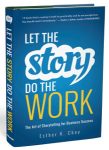
Click to buy Let the Story Do the Work
Comments:
Filed Under: Books
Posted by Elena del Valle on May 10, 2018
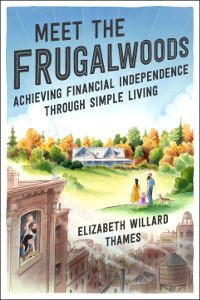
Meet the Frugalwoods
Photos: Courtesy of HarperBusiness, Nate Thames
The rat race sometimes gets to be a bit much, dragging down the best of us. A few lucky people discover a way out. Fewer still find financial independence of some kind and share the story of how they did it. Elizabeth Willard Thames and her husband Nate are working yet living life on their own terms. While many may not want to relocate permanently to remote and rural Vermont as they did achieving their goal of financial independence may appeal to many of us.
In Meet the Frugalwoods Achieving Financial Independence Through Simple Living (Harper Business, $22.99), a 229-page hardcover book published recently, Elizabeth Thames shares the experiences in life and work that led her and her husband to quit their jobs and leave a conventional life in upscale Cambridge, Massachusetts in search of a more meaningful and satisfying life in the country. She also explains in general terms how they followed a more frugal than most approach for years that allowed them to save enough (as much as 70 percent of their take home income at times) to make big purchases with relative ease without having to always borrow for a mortgage or bank loan.
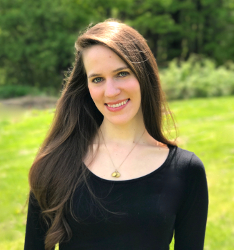
Elizabeth Willard Thames, author, Meet the Frugalwoods
Thames is the blog voice behind the Frugalwoods website, focusing on personal finance from her personal perspective. She, her husband and their small children live in a homestead in the Vermont woods. She did not respond to questions submitted more than one week in advance via her publishing company.
Thames holds undergraduate degrees in political science and creative writing from the University of Kansas and an masters in public administration from American University. Prior to following her calling as a writer and homesteader, she worked for ten years in the nonprofit sector as a fund-raiser and communications manager.
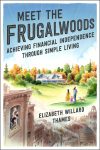
Click to buy Meet the Frugalwoods
Comments:
Filed Under: Books
Posted by Elena del Valle on May 3, 2018

The Making of a Massacre
Images: Audible, ProPulica
On May 4, 2018 the final parts of The Making of a Massacre, a five-part audio series (The first part of the series is already available for Audible members on the company website) should become available. In the series, Ginger Thompson, investigative reporter, ProPublica, takes listeners through the nonfiction story of the disappearance of dozens of people from Allende, a small Mexican border town. She relies on interviews, English voice over excerpts of interviews with townspeople, officials, and cartel members to illustrate “the way in which well-intentioned efforts to curtail the drug trade had devastating real-life results.”
The review edition of the audio recording, about two hours long, had uneven volume and at times it was difficult to distinguish sounds and words from sound effects and background noises. Despite multiple requests submitted two weeks in advance via a publishing company representative first and later directly to the journalist, Thompson declined to respond to questions about the recording.

Ginger Thompson
According to promotional materials, Thompson spent 15 years at The New York Times, including time as a Washington correspondent and as an investigative reporter whose stories revealed Washington’s secret role in Mexico’s fight against drug traffickers. While at The Times, she covered Mexico’s transformation from a one-party state to a fledgling multi-party democracy and into breaking news events across the region, including Cuba, Haiti and Venezuela.
For her work in the region, she was a finalist for The Pulitzer’s Gold Medal for Public Service. She won the Maria Moors Cabot Prize, the Selden Ring Award for investigative reporting, an InterAmerican Press Association Award, and an Overseas Press Club Award. Thompson was also part of a team of national reporters at The Times that was awarded a 2000 Pulitzer Prize for the series How Race is Lived in America.
Comments:
Filed Under: Books

















